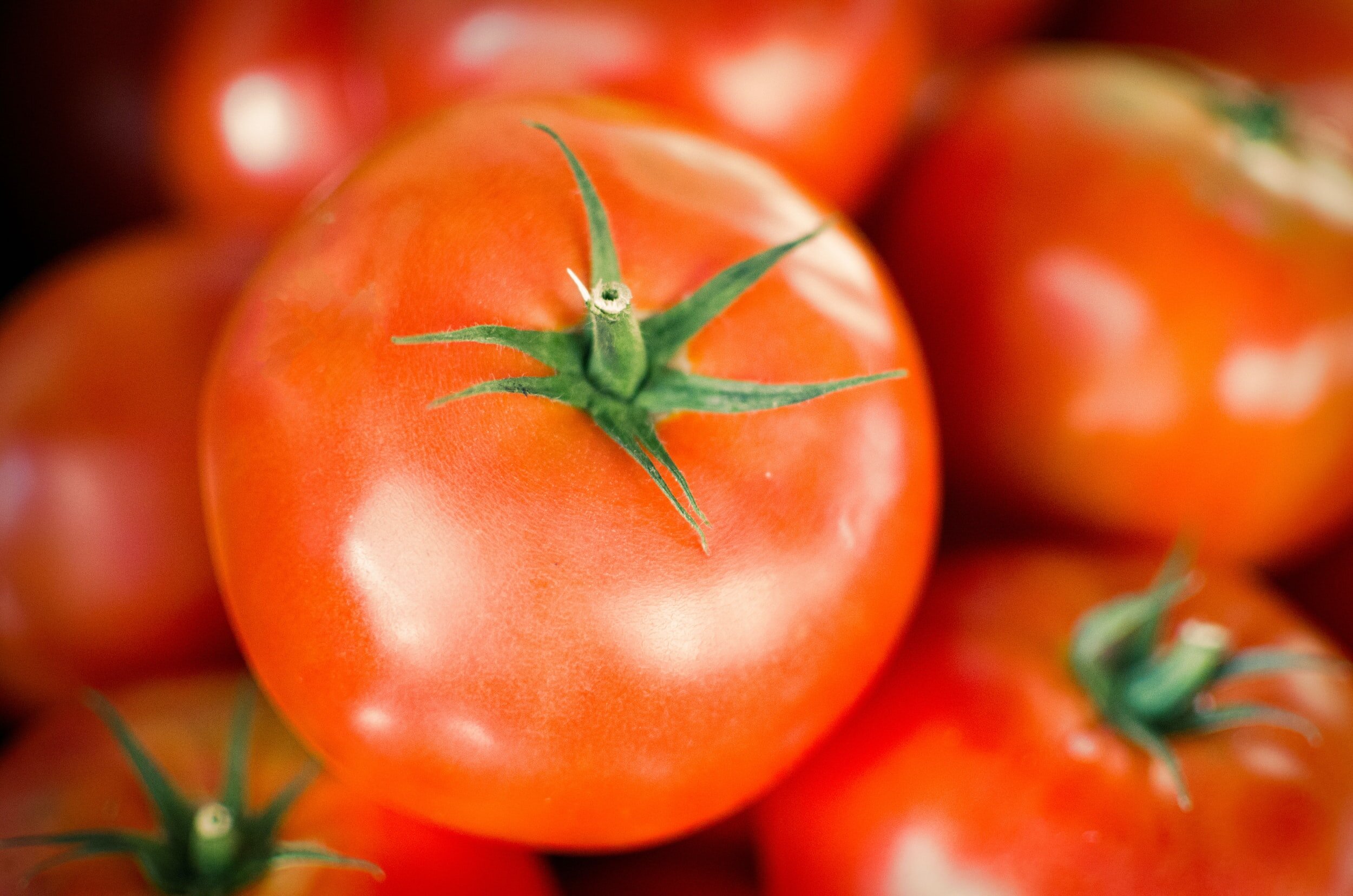
Tomato facts
History
Tomatoes originate from the Andes, growing wild in what is now Peru, Bolivia, Chile and Ecuador. The Incas and Aztecs were the first to cultivate the fruit in as early as 700 AD. The English word tomato actually comes from the Aztec tomatl.
Tomatoes first arrived in Europe in the 16th century, although there’s dispute over how. Some say they were brought back from Central America by Spanish Conquistadors, while another legend suggests two Jesuit priests brought them to Italy from Mexico.
The first cultivated tomatoes were yellow and cherry-sized, earning their name golden apples: goldapfel in German, pomodoro in Italian and pommes d'or in French. Convinced they had aphrodisiac properties, the French also nicknamed toms pommes d'amour, or love apples.
The Latin name for the cultivated tomato is Lycopersicon, or wolf peach, probably a reflection of the long-held (but mistaken) belief that the tomato was poisonous.
It wasn’t until the 19th Century that commercial tomato growing began in Britain. The first glasshouses were built in Kent and Essex after large-scale production of sheet glass was developed. It’s now a growing industry, using sustainable methods to cultivate only the tastiest and freshest tomatoes around.
Tomatoes have been successfully grown in space, with no significant difference found from those produced back home. Back here on Earth, they’re now grown across the planet – from Iceland to the Falkland Islands.
Fruit or veg?
Strictly speaking, toms are fruits. But in practice, we all use them like vegetables, serving them up with the mains rather than putting them in a pudding.
We think British writer Miles Kington summed it up best when he said: “Knowledge is knowing that a tomato is a fruit; wisdom is not putting it in a fruit salad.”
Tomato Types
There are countless varieties of British tomatoes available in supermarkets, green grocers and market stalls across the country. Here are a few to look out for:
Classic – your familiar favourite. Fantastic all-rounder, great for salads, grilling, baking or frying
Cherry – small and sweet. Great in a salad and a particular favourite of kids. Can be found in red, golden, orange and yellow
Cocktail – slightly larger than cherry toms but just as sweet. Delicious raw or cooked
Plum and baby plum – distinctive oval shape. Fleshy texture means they’re ideal for the barbecue and a natural choice for pasta dishes and pizzas
Beef – big and meaty. Excellent for stuffing and baking whole
Vine tomatoes
Also known as truss tomatoes, these are toms that are sold still attached to the fruiting stem. Not to be confused with vine-ripened tomatoes, which are tomatoes that are picked when ripe – this gives optimum flavour but makes the fruit more perishable.
All British tomatoes are vine-ripened because they have only a short distance to travel to market. Imported tomatoes usually have to be picked less ripe to withstand the lengthy journey by road or sea – and firmer, long-life varieties are commonly used.
A growing market
In Britain we eat around 500,000 tonnes of fresh tomatoes every year. That’s 6oz or 160g per person per week - the equivalent of two classic British tomatoes per week, or more than 100 per year.
This is still lower than in other European countries, especially those in the Mediterranean region but it’s rising fast. According to market insights specialist, Kantar, lunch is the meal we’re most likely to add tomatoes to at the moment – up by 30% since January 2021.
Of all the tomatoes we buy in the UK, British growers currently produce around 70,000 tonnes. During the summer, this can be around half the tomatoes bought in supermarkets.
The rest are mostly imported from elsewhere in the world (some 400,000 tonnes). British growers are committed to producing more tomatoes in the UK to meet homegrown demand and cut the need for food miles where the environment, quality and taste is often compromised.
In total, Brits spend £921M on tomatoes annually. Of this, around £190M is on higher value, better tasting home grown British tomatoes.
The market for tomatoes generally, and British tomatoes in particular continues to grow. It’s not just that people are buying more tomatoes, they’re also choosing to spend a little more on premium varieties (like tomatoes on the vine). Vine tomatoes now account for around two-thirds of the UK tomato production area.
UK growers continue to invest and innovate to produce food in the most sustainable way, using technology to save energy, water and reduce carbon emissions.
We’re really grateful to Kantar for helping us with some of the facts and figures here which are from their Total Fresh Tomatoes consumption data, Kantar, Worldpanel FMCG. For more insights on growing the tomato market, please contact Kantar.
